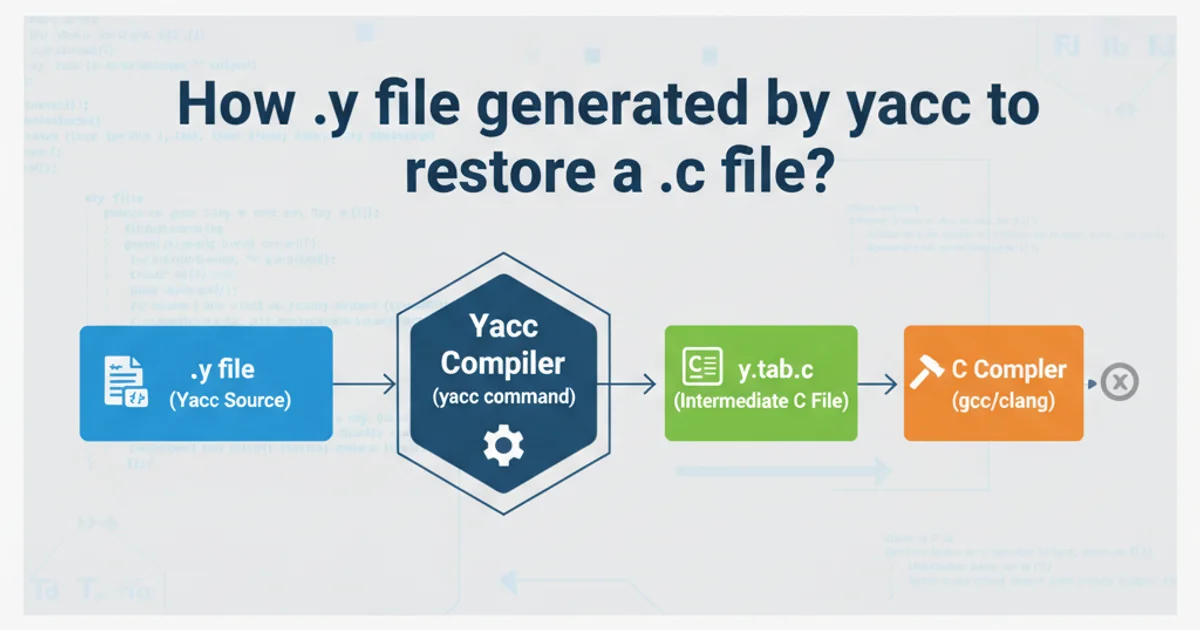Compile to a stand-alone executable (.exe) in Visual Studio
Categories:
Compiling Your Visual Studio Project to a Stand-Alone Executable (.exe)

Learn how to package your C# or C++ Visual Studio project into a self-contained .exe file, enabling easy distribution and execution without requiring the full development environment.
Creating a stand-alone executable (.exe) from your Visual Studio project is a fundamental step for distributing your application. Whether you're developing in C# for a .NET application or C++ for a native desktop program, Visual Studio provides straightforward methods to compile your code into a single, runnable file. This article will guide you through the process for both C# and C++ projects, ensuring your application can be easily shared and run on target machines.
Understanding Executables and Build Configurations
Before diving into the steps, it's important to understand what an executable is and how build configurations affect it. An .exe file contains the compiled machine code and resources necessary for your program to run directly on an operating system. Visual Studio uses 'Build Configurations' (like Debug and Release) to manage different compilation settings. The Release configuration is typically optimized for performance and size, and it's the one you should use for final distribution.
flowchart TD
A[Source Code (C#/C++)] --> B{Visual Studio Build Process}
B --> C{Compiler (Roslyn/MSVC)}
C --> D{Linker}
D --> E[Executable (.exe)]
E --> F{Runtime Environment (e.g., .NET/OS)}
F --> G[Application Execution]
B -- "Build Configuration" --> H(Debug/Release Settings)Simplified flow of compiling source code to an executable in Visual Studio.
Compiling a C# .NET Project to .exe
For C# projects, Visual Studio compiles your code into an Intermediate Language (IL), which is then Just-In-Time (JIT) compiled by the .NET Runtime on the target machine. While a traditional .exe is created, it often relies on the .NET Runtime being present. Modern .NET (Core/.NET 5+) offers options for self-contained deployments, bundling the runtime with your application.
1. Step 1: Set Build Configuration to Release
In Visual Studio, navigate to the toolbar and change the 'Solution Configuration' dropdown from Debug to Release. This ensures your application is compiled with optimizations and without debugging symbols, resulting in a smaller and faster executable.
2. Step 2: Build Your Project
Go to Build > Build Solution (or press Ctrl+Shift+B). Visual Studio will compile your project. If there are no errors, the build will succeed.
3. Step 3: Locate the Executable
After a successful build, the .exe file will be located in your project's bin/Release/netX.Y (for .NET Core/.NET 5+) or bin/Release (for .NET Framework) folder. You can quickly open this folder by right-clicking your project in Solution Explorer, selecting Open Folder in File Explorer, and then navigating to bin\Release.
4. Step 4 (Optional): Publish for Self-Contained Deployment (for .NET Core/.NET 5+)
For .NET Core or .NET 5+ applications, you can create a self-contained executable that includes the .NET runtime. Right-click your project in Solution Explorer, select Publish..., choose a target (e.g., Folder), and then configure the profile. Under Deployment Mode, select Self-contained and choose the target runtime (e.g., win-x64). This will create a folder with your application and the necessary runtime files, including the .exe.
Publish feature, especially for .NET Core/.NET 5+ projects. It offers more deployment options, including self-contained executables and single-file executables, which simplify distribution significantly.Compiling a C++ Project to .exe
C++ projects in Visual Studio compile directly into native machine code. The resulting .exe file is typically self-contained, though it might depend on specific runtime libraries (like the Visual C++ Redistributable) being present on the target system.
1. Step 1: Set Build Configuration to Release
Similar to C#, ensure your 'Solution Configuration' is set to Release in the Visual Studio toolbar. This optimizes the C++ compilation for performance and reduces the executable size.
2. Step 2: Build Your Project
Go to Build > Build Solution (or press Ctrl+Shift+B). The C++ compiler (MSVC) will compile your source files and the linker will combine them into an executable.
3. Step 3: Locate the Executable
The compiled .exe will be found in your project's x64\Release or Win32\Release folder, depending on your project's platform target. You can access this by right-clicking your project in Solution Explorer, selecting Open Folder in File Explorer, and navigating to the appropriate Release subfolder.
4. Step 4 (Optional): Handle Runtime Dependencies
C++ executables often depend on the Visual C++ Redistributable Package. If your target machine doesn't have it, your application might fail to run. You can either instruct users to install it or statically link the runtime libraries (which increases .exe size) by going to Project Properties > Configuration Properties > C/C++ > Code Generation and changing Runtime Library to Multi-threaded (/MT) or Multi-threaded Debug (/MTd) for release builds.
/MT), be aware that your executable size will increase. Also, ensure you are using the correct runtime library version that matches your Visual Studio version to avoid compatibility issues.Verifying Your Executable
Once you have your .exe file, it's crucial to test it on a machine that does not have Visual Studio installed to ensure all dependencies are met. This helps identify any missing runtime components or other issues that might prevent your application from running correctly in a production environment.
cd C:\Users\YourUser\source\repos\YourCSharpProject\bin\Release\net6.0
YourCSharpProject.exe
Example of running a C# executable from the command line.
cd C:\Users\YourUser\source\repos\YourCppProject\x64\Release
YourCppProject.exe
Example of running a C++ executable from the command line.